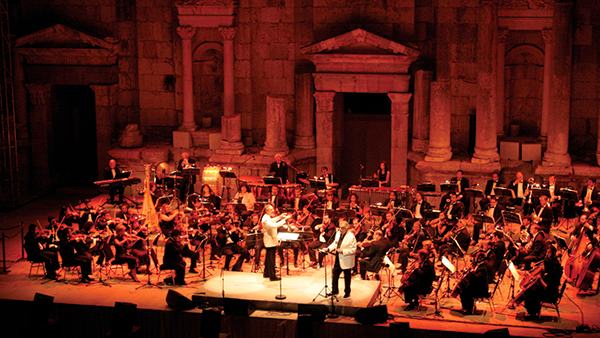Jerash Visitors' Center
Jerash Visitors Center was established in the early seventies in an area of 1000 square meters. Rehabilitated in 2015, in cooperation with USAID the center provides information and guidance about the historic sites of Jerash.
Contact information/ how to book:
Jerash Tourism Directorate:
Telephone: : 0096226354653
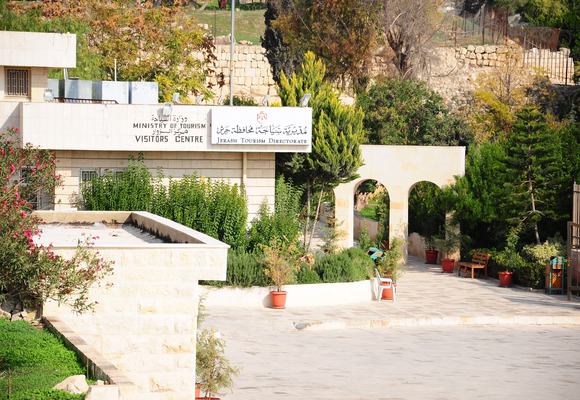
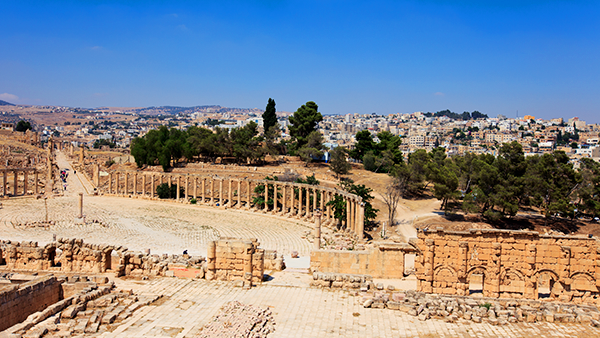
Jerash Archeological City
A close second to Petra on the list of favourite destinations in Jordan is the ancient city of Jerash, which boasts an unbroken chain of human occupation dating back more than 6,500 years.
Jerash lies on a plain surrounded by hilly wooded areas and fertile basins. Conquered by General Pompey in 63 BC, it came under Roman rule and was one of the ten great Roman cities of the Decapolis League.
The city's golden age came under Roman rule, during which time it was known as Gerasa, and the site is now generally acknowledged to be one of the best-preserved Roman provincial towns in the world.
Contact information/ how to book:
Jerash Tourism Directorate: 0096226354653
Jerash Archeological Museum
The Jerash Archaeological Museum was established in 1923 inside one of the vaults of the courtyard of the Artemis Temple. In 1985, the museum was moved to the renovated old rest house and the first special exhibition there was entitled “Jordan Through the Ages.” The museum is now dedicated solely to discoveries from the Jerash region and its collections span the archaeological periods in the area, from the Neolithic up to the Mameluk period. The displays are in chronological order with typological and functional divisions.
Contact information/ how to book:
Telephone: 0096226352267
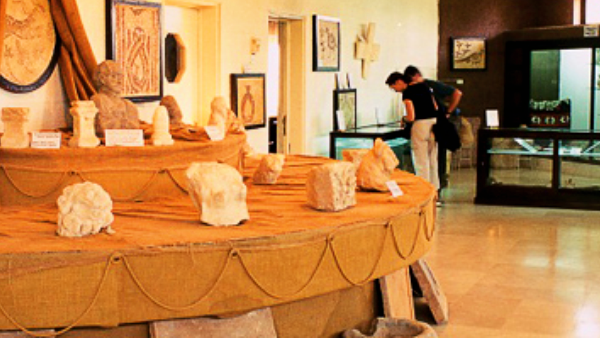
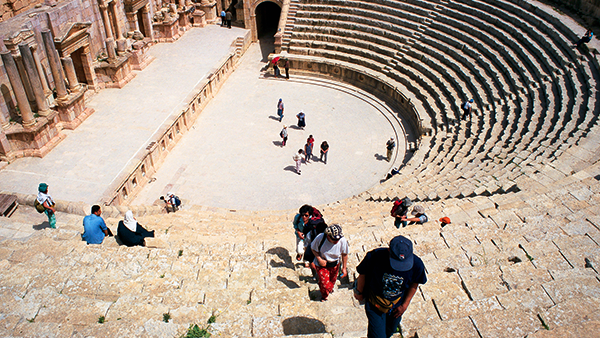
South Theater
Built during the reign of Emperor Domitian, between 90-92 AD, the South Theatre can seat more than 3,000 spectators. The 1st level of the ornate stage, which was originally a two- story structure, has been reconstructed and is still used today. The theatre's remarkable acoustics allow a speaker at the center of the orchestra floor to be heard throughout the entire auditorium without raising his voice. Two vaulted passages lead into the orchestra, and four passages at the back of the theatre give access to the upper rows of seats. Some seats could be reserved and the Greek letters which designate them can still be seen.
Contact information/ how to book:
Admission for the Jerash Archeological City is included in the Jordan Pass
North Theater
The North Theatre was built in 165 AD. In front is a colonnaded plaza where a staircase led up to the entrance. The theatre originally only had 14 rows of seats and was used for performances, city council meetings, etc. In 235 AD, the theatre was doubled in size to its current capacity of 1,600. The theatre fell into disuse in the 5th century and many of its stones were taken for use in other buildings.
Contact information/ how to book:
Admission for the Jerash Archeological City is included in the Jordan Pass
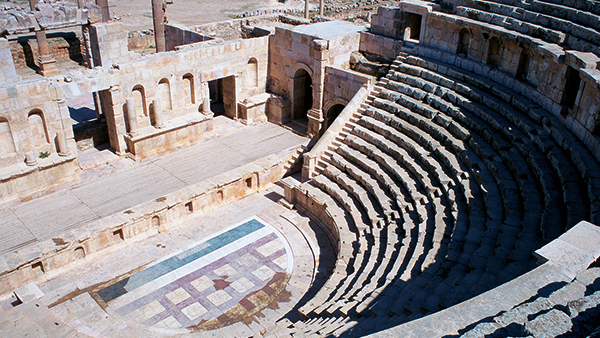
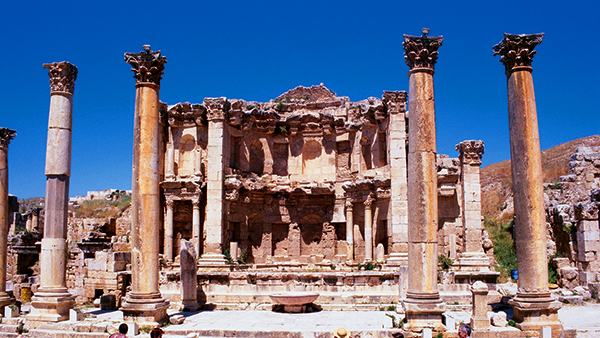
Nymphaeum
This ornamental fountain was constructed in 191 AD and dedicated to the Nymphs. Such fountains were common in Roman cities, and provided a refreshing focal point for the city.
This well-preserved example was originally embellished with marble facings on the lower level and painted plaster on the upper level, topped with a half-dome roof. Water cascaded through seven carved lion's heads into small basins on the sidewalk and overflowed from there through drains and into the underground sewage system.
Contact information/ how to book:
Admission for the Jerash Archeological City is included in the Jordan Pass
Cathedral
Further up the Cardo Maximus, on the left is the monumental and richly-carved gateway of a 2nd century Roman Temple of Dionysus. In the 4th century the temple was rebuilt as a Byzantine church now referred to as the ‘Cathedral’ (although there is no evidence that it held more importance than any of the other churches). At the top of the stairs, against an outer East wall of the Cathedral is the shrine of St. Mary, with a painted inscription to Mary and the archangels Michael and Gabriel.
Contact information/ how to book:
Admission for the Jerash Archeological City is included in the Jordan Pass
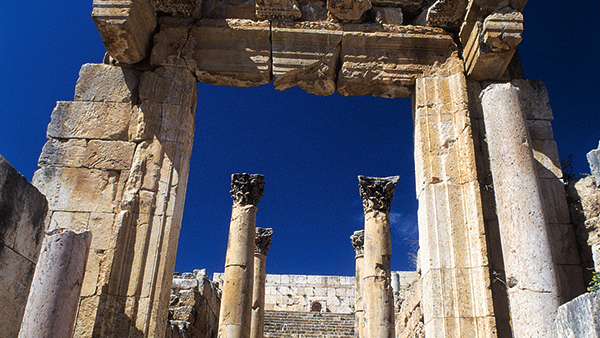
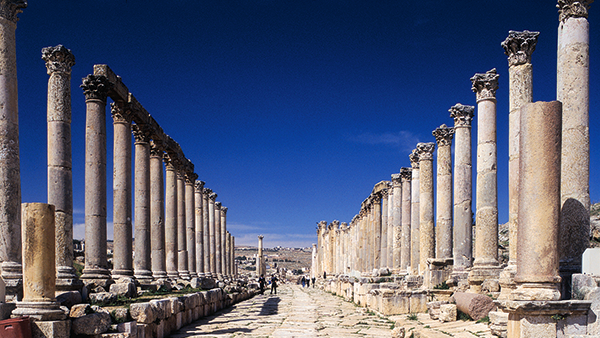
Colonnaded Street/ Cardo Maximus
Still paved with the original stones – the ruts worn by chariots are still visible – the 800m Cardo was the architectural spine and focal point of Jerash. An underground sewage system ran the full length of the Cardo and the regular holes at the sides of the street drained rainwater into the sewers.
Contact information/ how to book:
Admission for the Jerash Archeological City is included in the Jordan Pass
Oval Plaza
The spacious plaza measures 90mx80m and is surrounded by a broad sidewalk and colonnade of 1st century AD Ionic columns. There are two alters in the middle, and a fountain was added in the 7th century AD. This square structure now supports a central column, which was recently erected to carry the Jerash Festival Flame.
Contact information/ how to book:
Admission for the Jerash Archeological City is included in the Jordan Pass
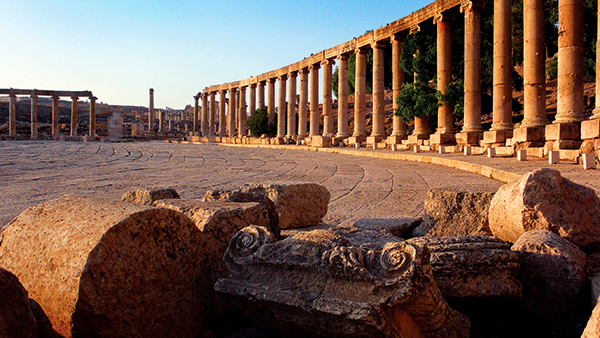
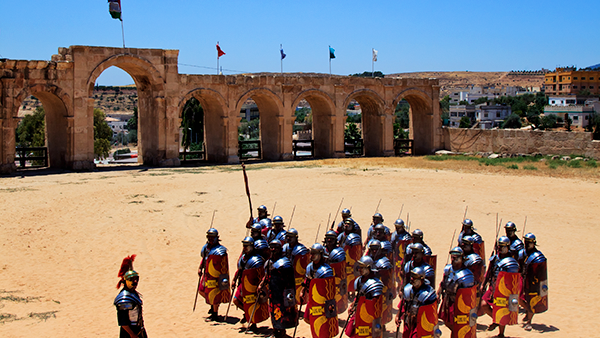
Hippodrome
This massive arena was 245m long and 52m wide and could seat 15,000 spectators at a time for chariot races and other sports. The exact date of its construction is unclear but it is estimated between the mid-2nd to 3rd century AD. It is now also possible to relive the days when gladiators and charioteers appeared before the crowds, with regular re-enactments by the Roman Army and Chariot Experience (RACE). For more about RACE, visit www.jerashchariots.com
Contact information/ how to book:
Admission for the Jerash Archeological City is included in the Jordan Pass
Hadrian’s Arch
Built to commemorate the visit of the Emperor Hadrian to Jerash in 129 AD, this splendid triumphal arch was intended to become the main Southern gate to the city; however, the expansion plans were never completed.
Contact information/ how to book:
Admission for the Jerash Archeological City is included in the Jordan Pass
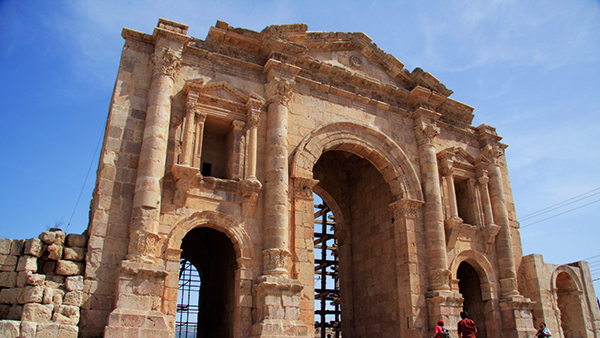
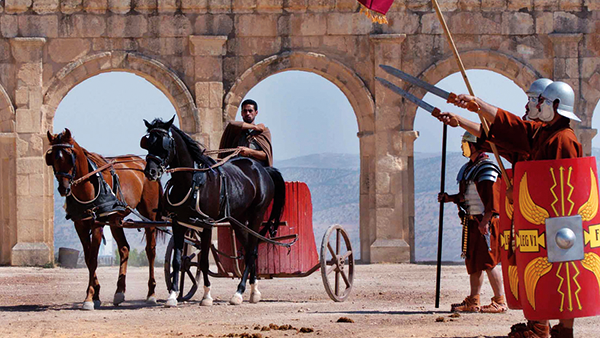
Roman Army & Chariot Experience (RACE)
RACE is the biggest regular show of any kind in the Middle East and the only large scale Roman re- enactment performance in the world. The show contains a performance of twenty-four fully equipped legionnaires showing their battle formations and tactics. The narrative explains the history of the Roman Army and their traditions and customs. The show also includes gladiator fights and chariot races.
Contact information/ how to book:
Website: http://www.jerashchariots.com/
Jerash Festival for Culture & Arts
The Jerash Festival usually takes place during the end of July and beginning of August .It showcases a wide array of singers, musical and folklore troupes, poetry readings, symphony orchestras, ballet, Shakespearean theatre, handicrafts, and art shows. The colonnaded streets, plazas, and theatres of Jerash all provide unique venues for these acts, under the balmy summer skies of central Jordan. While performances take place in the different arenas, thousands of visitors also enjoy strolling through the ancient streets and monuments of the city, shopping for handicrafts, taking in art and book exhibitions, enjoying a casual meal, or simply absorbing the powerful drama of East and West meeting in a great cultural jamboree.
Skilled craftsmen and women display Bedouin rugs, jewellery, embroidery, glass, wood, metal, and ceramic objects, and also demonstrate on the spot how they create their wares.
Contact information/ how to book:
Website: http://jerashfestival.jo/
